On View
Artist Natalie Frank on How Her Feminist Take on Fairy Tales Became an Experimental New Ballet in Texas
Ballet Austin created its new production 'Grimms' Tales' with artist Natalie Frank, who developed the performance's visual elements.
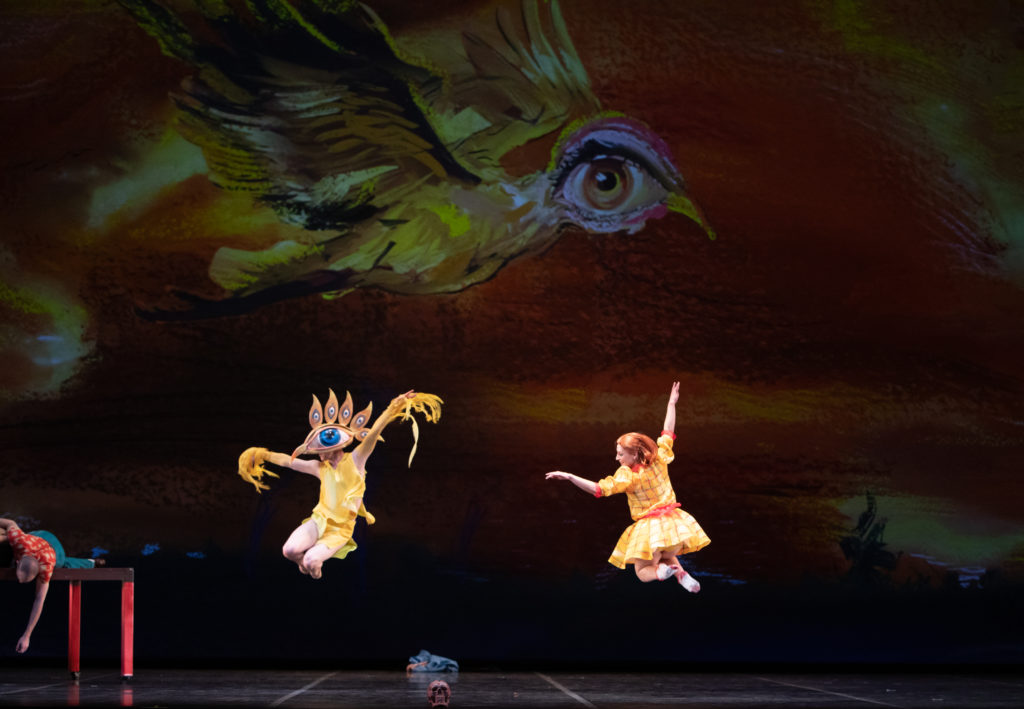
Ballet Austin created its new production 'Grimms' Tales' with artist Natalie Frank, who developed the performance's visual elements.

by
Rachel Corbett

There’s a longstanding tradition of artists collaborating with ballet companies, from Picasso’s Cubist sets for the Ballets Russes to Chagall’s costumes for the Magic Flute and Firebird. But rarely does an artist’s work inspire an entirely new ballet, as it did this past weekend when the the Austin Ballet premiered Grimm Tales, a production based on drawings by the New York-based artist Natalie Frank, who also created many of the resulting performance’s visual elements.
Ballet Austin artistic director Stephen Mills first saw Frank’s feminist reinterpretations of the Brothers Grimm’s fairy tales at the Drawing Center in New York in 2015 and, later, at the Blanton Museum in Austin. “First you see the colors, then the textures, and then you start to look at what’s going on narratively and—whoa—this is some strange stuff. It’s sensual, it’s sexual, and it’s very dark,” he said. In the past, he has staged such classics as the Nutcracker and Giselle, but it’s “exceptionally rare” to have the opportunity to produce contemporary ballet, he said. This felt like just the material to do it.
So how do two-dimensional drawings infuse all of the choreography, animation, and set design that goes into a ballet? We asked Frank to break down the process of translating her drawings into the Grimms’ fairy tale visuals, using the example of the title character of Act I, the Frog King.
Here, Frank tells the story, step-by-step—in her own words.
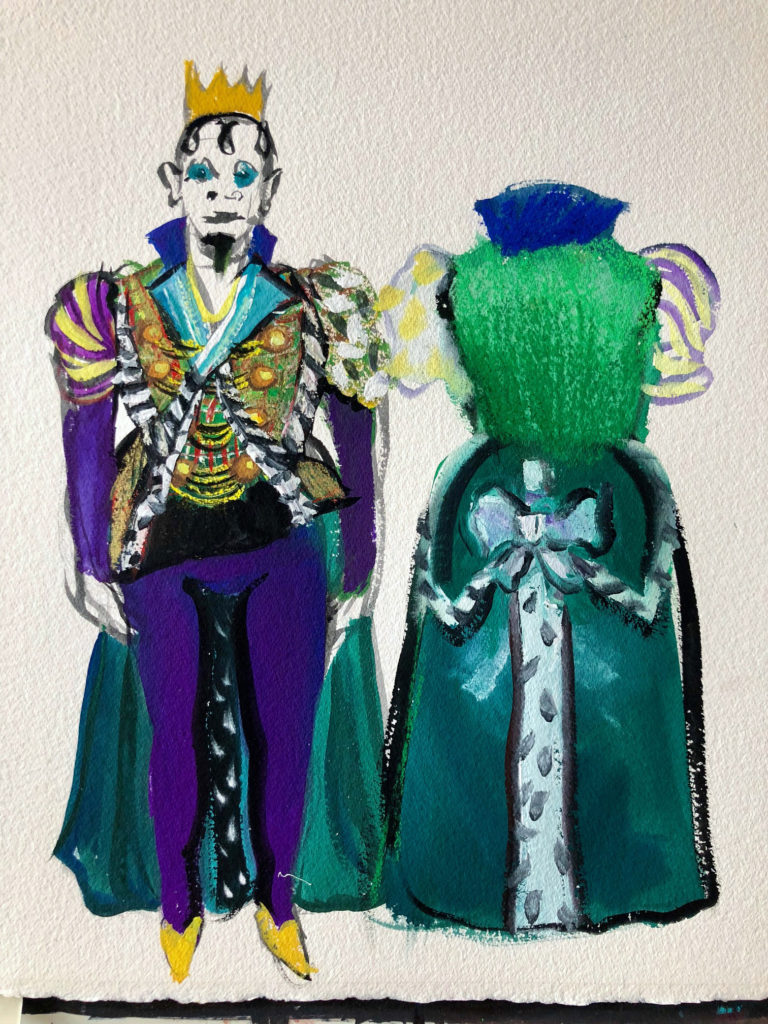
Natalie Frank’s costume drawing of the Frog King.

Inspirational material for the Frog King.
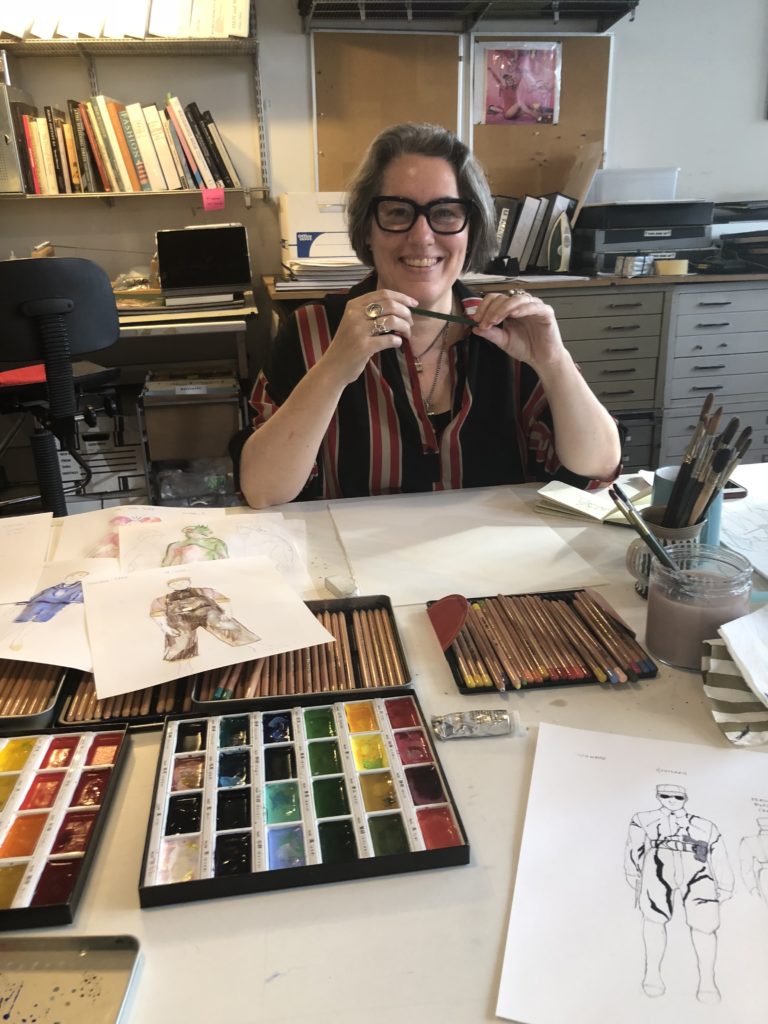
Costume designer Constance Hoffman.
In the beginning, Constance Hoffman and I worked on drawing costumes individually in our studios. I did a complete run-through first of all the characters. After this, we met and Constance said, “You have such a complete vision for this performance, are you sure you want a costume designer, and don’t want to be the designer yourself?”
I insisted that no, I didn’t—and that’s the story of how she almost quit before we began! I knew how much I did not know about how costumes, colors, patterns, and fabrics would translate on stage; how simple or complex costumes needed to be to read on stage and not overwhelm all of the other elements of the dance: the movement, story, music, and the sets (which are new drawings I made for the production projected onto scrims). Of course, I also had no idea about how things were actually made, where the shops were, and who the designers and artists were with whom we would collaborate.
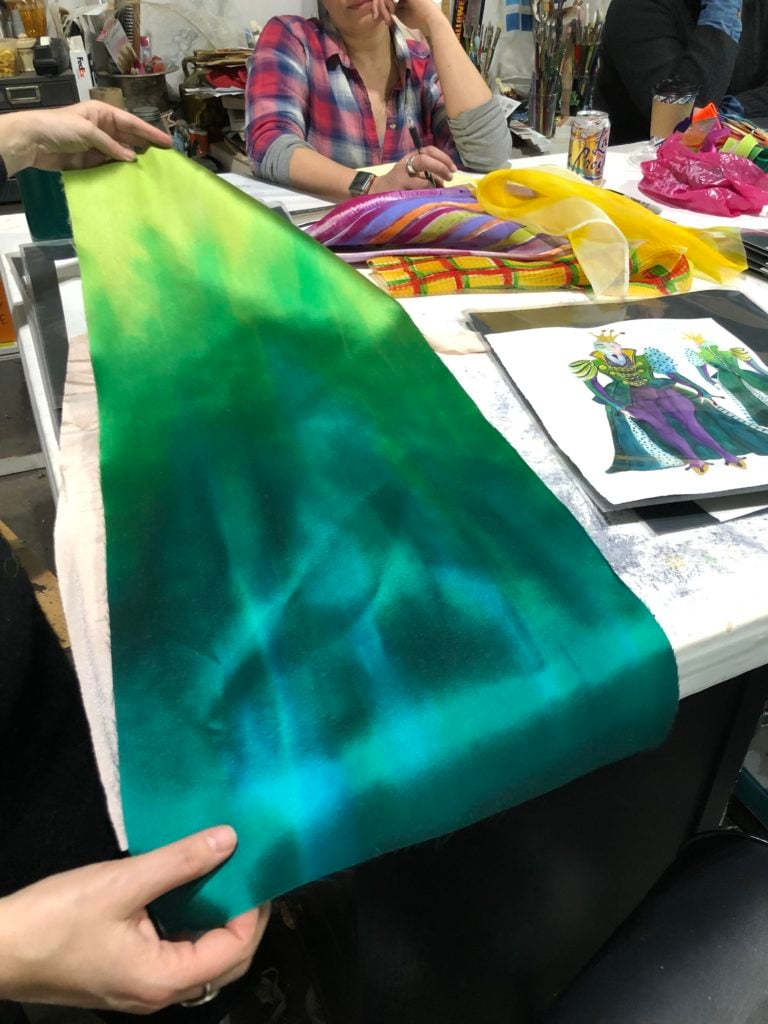
Hand-painted silk for the Frog King’s robe.
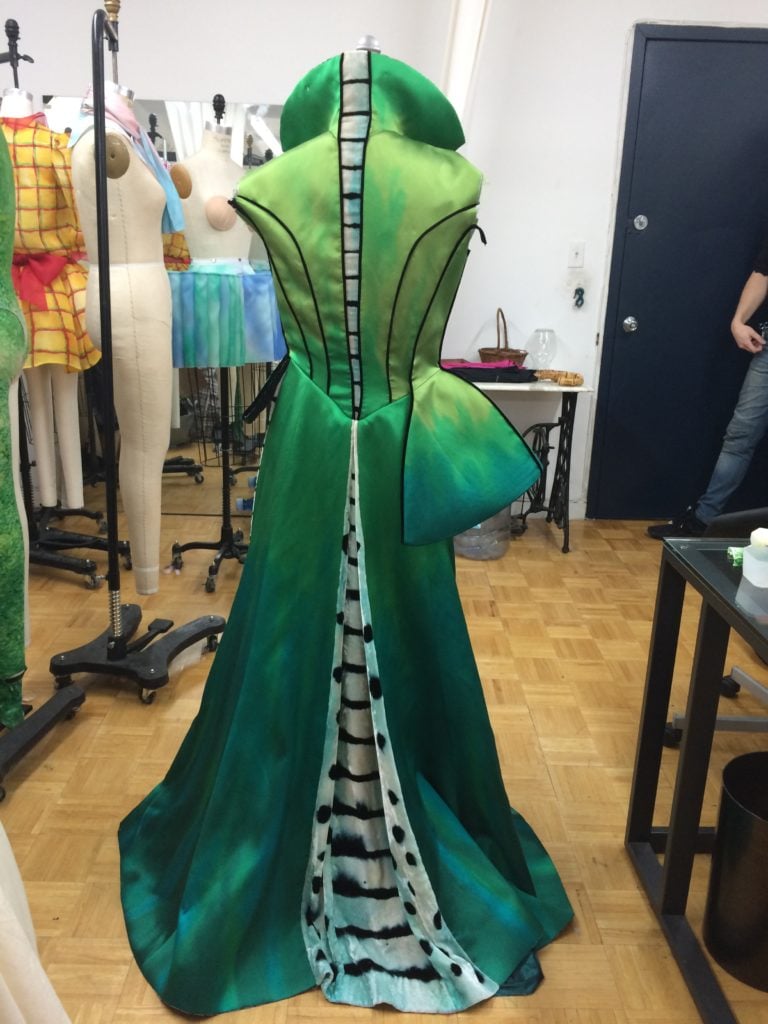
The king’s robe.
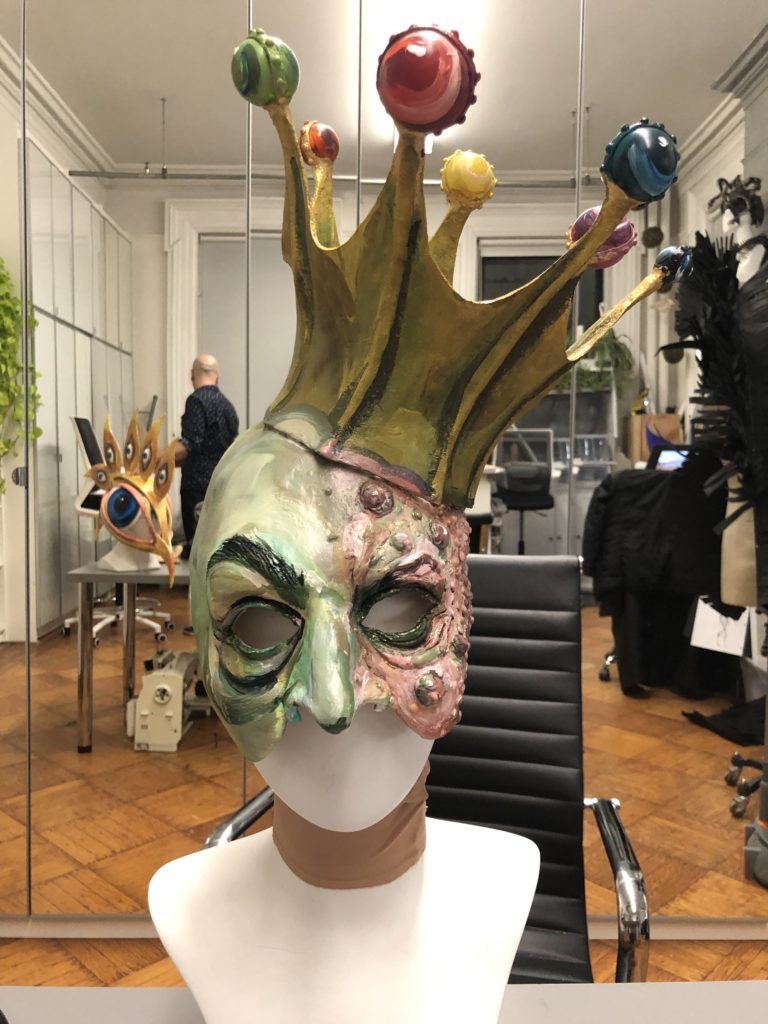
The hand-painted crown-mask worn by the Frog King.
The crown is connected to a mask, perhaps concealing the king’s true frog nature. We wanted to convey the idea that these representations of who we are—frog, king, princess—are mere representations, and perhaps our animalistic selves are really our truest ones.
I was also taken aback at first by how large props are for the stage!
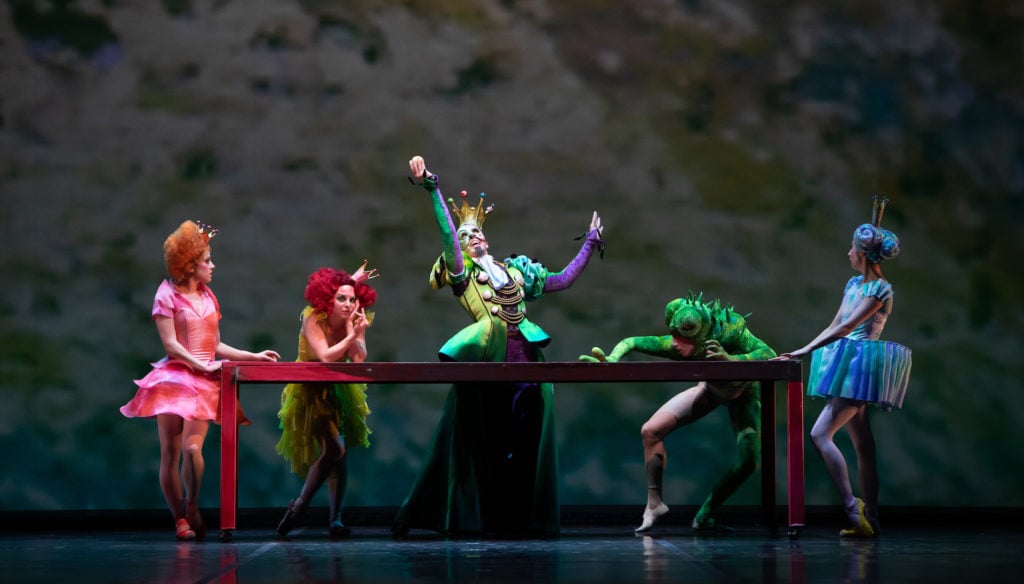
A dress rehearsal still of the The Frog King.